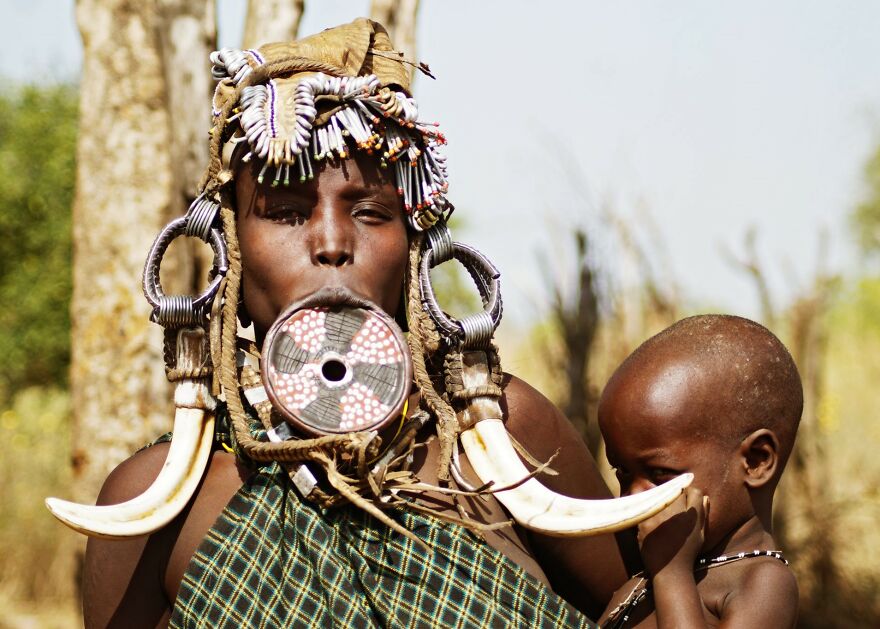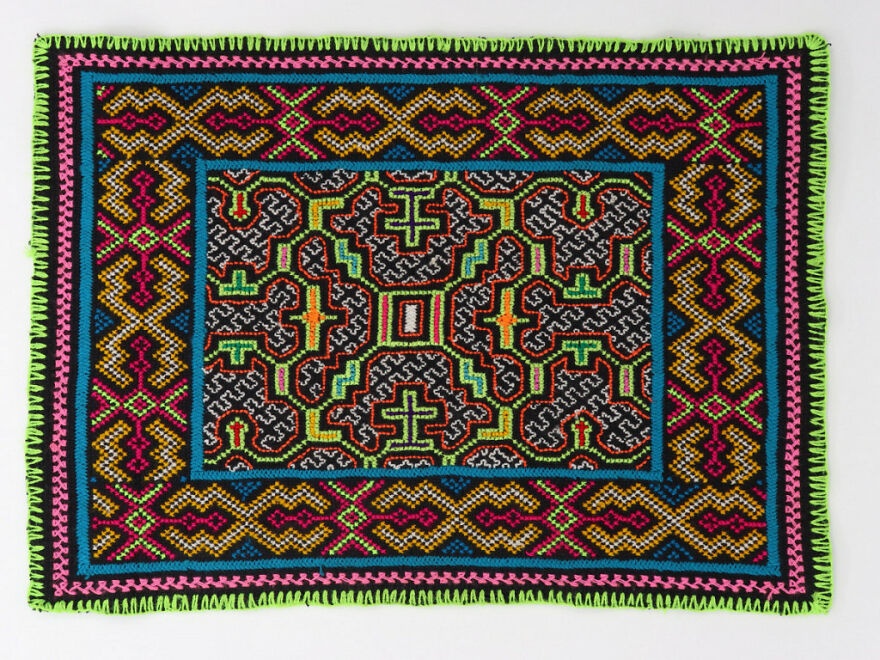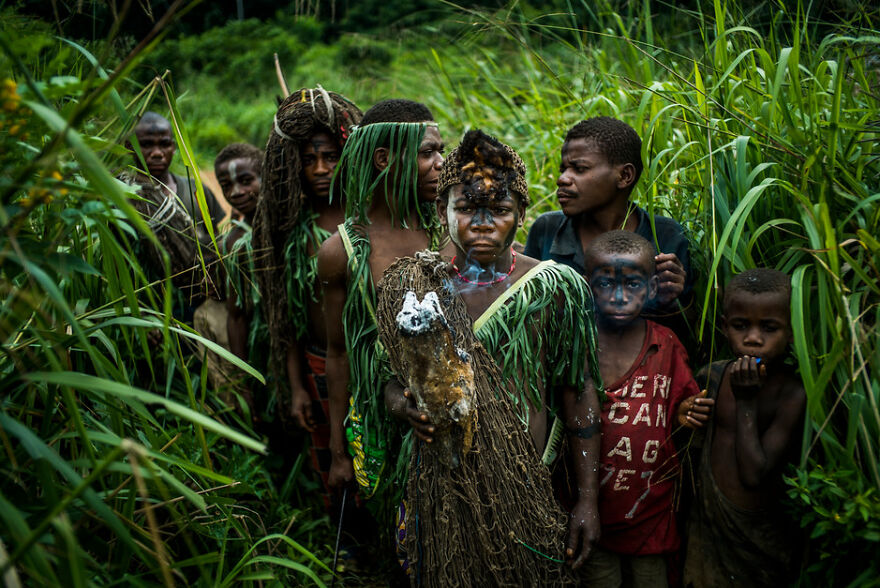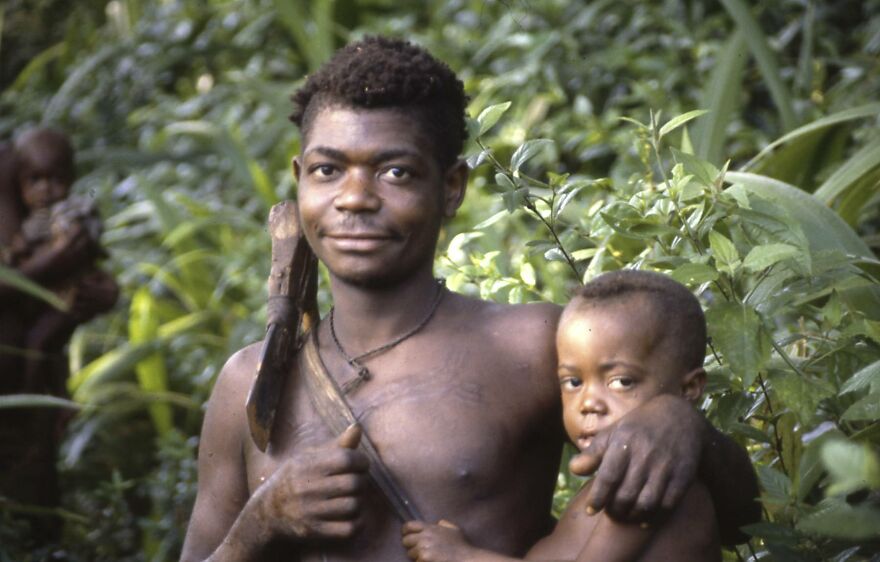
Hey Pandas !! Today Is The International Day Of The World’s Indigenous People. Let’s Celebrate With A Bit Of Culture !!
Some of you may have noticed i’m addicted to useless knowledge and fun facts. Looks like some of you appreciate them too so i thought maybe you would enjoy exploring original topics through a different perspective.
There are 309 international days per year that are celebrated, exploring a huge variety of topics. Let’s have fun and learn.
But for now, back to today’s topic !!
There are 370 million Indigenous people around the world spread across more than 90 countries. They belong to more than 5,000 different Indigenous peoples and speak more than 4,000 languages. Indigenous people represent about 5% of the world’s population. The vast majority of them – 70% – live in Asia.
Although they have different customs and cultures, they face the same harsh realities: eviction from their ancestral lands, being denied the opportunity to express their culture, physical attacks and treatment as second-class citizens.
Indigenous peoples are often marginalized and face discrimination in countries’ legal systems, leaving them even more vulnerable to violence and abuse. Indigenous human rights defenders who speak out face intimidation and violence, often supported by the state. In addition, individuals may be physically attacked and killed just for belonging to an Indigenous people.
Discrimination is the reason why Indigenous peoples make up 15% of the world’s extreme poor. Globally, they also suffer higher rates of landlessness, malnutrition and internal displacement than other groups.
Indigenous Peoples’ rights are laid out in the UN Declaration on the Rights of Indigenous Peoples, adopted in 2007.
The Chimbu people – Papua New Guinea
Image credits: www.flickr.com
The Chimbu, an ethnic and linguistic group, live in the Chimbu, Koro and Wahgi valleys in the mountainous central highlands of Papua New Guinea. They live in rugged mountain valleys between 1,400 and 2,400 meters above sea level, where the climate is temperate, with precipitation averaging between 250 and 320 centimeters per year.
Archaeological evidence at the Chimbu area proper and other highland areas “suggest occupation as long as 30,000 years ago, possibly with agriculture developing 8,000 years before the present.”
The Kayan people – Myanmar
Image credits: photoarts.com.br
Women of the Kayan tribes identify themselves by their forms of dress. Women of the Kayan Lahwi tribe are well known for wearing neck rings, brass coils that are placed around the neck, appearing to lengthen it.
Girls first start to wear rings when they are around 5 years old. Over the years, the coil is replaced by a longer one and more turns are added. The weight of the brass pushes the collar bone down and compresses the rib cage. The neck itself is not lengthened; the appearance of a stretched neck is created by the deformation of the clavicle.
The Mursi people – Ethiopia
Image credits: www.documentarytube.com
Surrounded by mountains between the Omo River and its tributary the Mago, the home of the Mursi is one of the most isolated regions of the country.
Like many agro-pastoralists in East Africa, the Mursi experience a force greater than themselves, which they call Tumwi.
The Mursi undergo various rites of passage, educational or disciplinary processes. Lip plates are a well known aspect of the Mursi and Surma, who are probably the last groups in Africa amongst whom it is still the norm for women to wear large pottery, wooden discs, or ‘plates,’ in their lower lips. Girls’ lips are pierced at the age of 15 or 16. Occasionally lip plates are worn to a dance by unmarried women, and increasingly they are worn to attract tourists in order to earn some extra money.
The Korowai people – Indonesia
Image credits: en.wikipedia.org
According to The Daily Telegraph, “Until the late 1970s, when anthropologists embarked on a study of the tribe, the Korowai were unaware of the existence of any peoples other than themselves”.
The Korowai are hunter-gatherers and horticulturalists who practice shifting cultivation. They have excellent hunting and fishing skills. Information about Korowai trade patterns is scant. The Korowai have a few gender-specific activities, such as the preparation of sago and the performance of religious ceremonies in which only the male adults are involved.
The Qashqa’i people – Iran
Image credits: en.wikipedia.org
The Qashqa’i are a pastoralist Turkic group of nomads, who nowadays mostly live in Iran and speak the Persian language in addition to their native Turkic language of Qashqa’i. Although many Qashqa’i now live sedentary lives, they have a very strong oral history, which puts their origins back around the 11th or 12th century in Central Asia. They are particularly famous for their weaving and their carpets, which are made from special Shiraz wool and are, therefore, brighter in color and softer in texture than the products from elsewhere in the country.
The Nukak-Maku people – Colombia
Image credits: www.survivalinternational.de
Up until 1981, the Nukak-Maku lived entirely separate from the world around them, hidden deep into the Amazon rainforest in Colombia. There are now less than a thousand of them, as many died as a result of diseases contracted from outsiders. Traditionally, they are hunter-gatherers, and the millennia have provided them with ample time to become true experts in the trade. They use blowguns, poison darts and javelins to hunt various monkeys, birds, peccaries, and numerous other edible creatures and plants. They do not, however, hunt deer or tapirs – according to their philosophy, these animals are from the same origin as humans and, therefore, must be left alone.
The Pokot people – Kenya and Uganda
Image credits: www.flickr.com
The Pokot are a pastoralist people living in Kenya and Uganda, who subsist by herding cows, sheep and goats. They have a fascinating and beautiful material culture that includes intricately beaded jewelry and printed fabrics, but they are also well known for their folklore. The spoken word is very important for them, with proverbs, riddles and stories all making up important pieces of any Pokot child’s education.
The Kochi people – Afghanistan
Image credits: kuchivoice.blogspot.com
The Kochi people are a group of pastoral, or herder, nomads who live in Afghanistan. There are about 2.4 million of them – 1.5 million of whom still keep to a nomadic lifestyle. They raise sheep and goats then sell the meat, wool and dairy products they can glean from these animals to buy other food to sustain their families. Turmoil in the region has disrupted their traditional migration patterns, which were determined by what they needed to do in order to raise the animals well. While in some ways they have remained outside of what we would consider the modern world, the Kochis have traditionally played an important role in Afghan society, and they still do today.
The Dayak people – Borneo
Image credits: www.indonesia-tourism.com
The Dayak tribe were the original heirs to the Borneo land. Although they practiced agriculture, hunting and gathering, they were feared for their ferocious head-hunting practices, called Ngayau. The Dayak attributed supernatural powers to the heads of their enemies and used them in rituals to secure crops or bring good fortune to their homes. The members of the tribes acquired greater social rank with the greater number of heads collected. Don’t worry, they no longer practice these rituals for many years!
Newar people – Nepal
Image credits: globalpressjournal.com
The Newari are a mixed ethnic minority of Tibetans and Indians who, for centuries, have inhabited the beautiful hills near the Himalayas. Their stronghold is the Kathmandu valley, but the Newars are careful to distinguish themselves from the other peoples of the hills. Although they are an ethnic minority, their majority presence in the valley has allowed them to exercise a strong cultural influence.
The tradition of Newar people wants girls to be married three times: the first one with a bael fruit, also known as wood apple, to protect them if the future husband dies. The second one to the Sun and finally they get married to a man. The Newari girls also go through the Bara ceremony or ( Gufa rakhne) as a symbol of ascension to womanhood.
The Huli people – Papua New Guinea
Huli Wigmen are most known for their colorful decorated wigs and extreme violent temperament. They fight with other clans over land, pigs and women. Growing a wig starts from an early age as part of manhood training while they live in a secretive cave deep insight the jungle. For each boy a seed of plant is planted and their souls are connected by magical spells. The plan represents the spiritual status of each trainee and notifies when a boy is ready to be called man and return home. Should a boy become powerful and respected warrior, the plant assigned to him will flourish. When the person dies or his mind becomes poisoned, his plant will get dry and perish.
The Fulani people – western Africa
Image credits: www.flickr.com
The Fulani community is a crucial nomadic ethnic group in the African continent.
The Fulani are very proud of their code of behaviour. It is called “Pulaaku” and it can be considered to be the decorum, chivalry and good manners of a Fulani person. It is so intricate that sometimes it makes it hard for some people to enact “Pulaaku” all day, but the rules are followed for the majority of public interactions.
Prudence, respect, self-control, mental discipline and modesty are a lifestyle. The “Fulani way” also includes four essential character traits that every Fulani should have: “munyal” (patience, self-control, discipline), “hakkiilo” (wisdom, forethought), “semteende” (modesty, respect), “sagata” (courage, hard work).
The Nenets people – Siberia
Image credits: www.lifeonthinice.org
Evidence of indigenous peoples being dedicated to the reindeer economy in the Yamal Peninsula dates back a thousand years. Nenets were originally hunters, but for centuries specialized in the domestication of reindeer, which created a bond in which they were mutually dependent on each other for survival.
the Malagasy tribe – Madagascar
Image credits: www.travelnation.co.uk
A funeral tradition followed by the Malagasy tribe in Madagascar, people literally dance with dead bodies as part of the Famadihana custom. After bringing bodies of ancestors from their burial place, they re-wrap them in fresh cloth and dance around the tomb to live music. The ritual is followed once in seven years
The Enawene Nawe people – Brazil
Image credits: en.wikipedia.org
The Enawene Nawe tribe of Brazil practice one of the longest ritual celebrations on Earth, lasting over 4 months. They build intricate wooden dams across rivers to catch fish migrating from their spawning grounds. After the ritual ends, the dams are destroyed.
The Moken people – the Andaman Sea
Image credits: imgur.com
The Moken people of the Andaman Sea have remarkable visual skills. Their aquatic lifestyles mean they have developed the unique ability to focus under water in order to dive for food on the sea floor. Their sight is 50% more acute than Europeans’
The Bushmen tribe – Kalahari Desert
Image credits: www.lifegate.com
ǃXóõ, a language spoken by Bushmen tribes in the Kalahari Desert, has over 160 sounds (English has only 42). This includes five different “click” sounds originally found only in Bushman languages.
The Penan people – Borneo
The Penan have developed an intricate communication code to leave small information in the forest for fellow tribe members wandering in nature. The codes are usually left for safety reasons indicating to the person possible obstacles or dangers ahead and conveying the message using sticks, leaves, and stones.
The Penan don’t have any word to say “thank you”, however, Jian kenin is the closest translation and it literally means “feel good”. To the Penans the lack of sharing is a serious insult and violation, but moderation is also important and you will never find a member abusing people’s generosity.
The Bajau people – Malaysia
Image credits: www.mirror.co.uk
The sea-faring Bajau people of Malaysia can hold their breath for up to 3 minutes and free-dive up to 20 meters. Scientists found that the Bajau are submerged for up to 60% of the time they spend in the water, which is nearly as long as a sea-otter.
The Shipibo people – Peruvian Amazon
Image credits: maya-ethnobotanicals.com
The Shipibo people of the Peruvian Amazon make intricate geometric art that can be read as music. The people can “hear” the song by looking at the patterns, like sheet music. The patterns represent chants and songs associated with Ayahasca healing ceremonies.
The Dani people – West Papua
Image credits: www.unchartedbackpacker.com
The spectacular Baliem Valley in West Papua is home to the Dani people, who are said to have developed agriculture at least 9,000 years ago, probably far in advance of Europe.
The Dogon people – Mali
Image credits: www.egotimes.com
Sirius is the brightest star in the sky and has a hidden partner. Sirius B is invisible to the naked eye and was only discovered by Western scientists in the 19th century. But it has been reported that the Dogon people of Mali may have known about the star before and understood its 50 year orbital period.
The Wodaabe people – northern Niger
Image credits: www.vozafric.com
The Wodaabe people in northern Niger hold a male beauty contest every year at the end of the rainy season. Young men wear makeup, jewelry and their best clothes and line up to compete for the attention of the women.
The Orang Rimba people – Indonesia
Image credits: www.mongabay.co.id
When a child is born to the Orang Rimba tribe of Indonesia, the umbilical cord is planted under a Sentubung tree. The child has a sacred bond with that tree for the rest of their life, and for the Orang Rimba, cutting down a “birth tree” is equivalent to murder.
the Soliga people – India
Image credits: www.survivalinternational.org
When they harvest honey from high in the trees, the Soliga people (from India) take some for themselves and leave some near the ground for tigers, who they consider family, because tigers cannot climb the trees and harvest honey for themselves.
The Yanomami people – Amazon rainforest
Image credits: www.survivalinternational.de
Yanomami hunters never eat their own catch. They give it away to others before they even bring it home. In turn, they only eat what the other hunters have given to them. Everyone eats something provided by someone else, fostering community spirit and cohesion.
The Hadza people – Tanzania
Image credits: www.huffpost.com
The Hadza people of Tanzania value equality highly and have no official leaders. For them it is a moral obligation to give what you have without expectation of return. If you have more personal possessions than you have immediate use for, you should share them.
The Piroa people – Venezuela
Image credits: yawarapu.com
Peace comes from dismissing concepts of ownership, competition, vanity and greed, according to the Piaroa people of Venezuela. They disavow violence, hold men and women to be of equal status, and never physically punish children.
The Khasi people – northern India
Image credits: www.topfivebuzz.com
The Khasi tribe is one of the few matrilineal communities that still exist worldwide. They are located in the Meghalaye province of India. The tribe consists of clans which are determined by the mother’s family lineage. And children are generally regarded as offsprings of the mother’s family lineage or clan, rather than the offsprings of the father’s family lineage. Customarily, the female children inherit real property such as land in the community.
The Bnei Menashe people – northern India
Image credits: www.sevendiary.com
The Bnei Menashe tribe, found in Manipur and Mizoram, in India, are descendants of the Lost Tribes of Israel. Instead of converting to other religions, these people converted back to the religion of their ancestors after rediscovering their roots. In 2005, one of Israel’s chief rabbis accepted the Bnei Menashe people as descendants of the lost tribes
The Sentinelese people – India
The world’s most isolated tribe is the Sentinelese, sometimes called the Sentinels. They live on the North Sentinel Island situated in the Bay of Bengal in India. They are believed to be among the last uncontacted peoples in the world.
The San tribe – southern Africa
Image credits: www.oxonianreview.org
The San tribe has been living in Southern Africa for at least 30,000 years and they are believed to be not only the oldest African tribe, but quite possibly the world’s most ancient race. The San have the most diverse and distinct DNA than any other indigenous African group. This means the San are direct descendants one of the original ancestral human groups.
The Mbutsi people – Democratic Republic of the Congo
Image credits: portfolio.newschool.edu
The shortest tribe are the Mbutsi people from the Democratic Republic of the Congo, with an average height of 1.37 m (4 ft 6 in) for men and 1.35 m (4 ft 5 in) for women, with some groups averaging only 1.32 m (4 ft 4 in) for men and 1.24 m (4 ft 1 in) for women.
The Aka tribe – Central Africa
Image credits: kwekudee-tripdownmemorylane.blogspot.com
In the Aka tribe of Central Africa the male and female roles are virtually interchangeable. Women hunt, men mind the children and vice versa. Men spend 47 percent of their time within reach of their kids, more than any other society, and even let them suckle.
The Kalash people – Pakistan
Image credits: www.facebook.com
The Kalash people are white-skinned, clear-eyed tribe in the back country of Pakistan, who claim to be descendants of the ancient Greeks.
425views
Share on FacebookAnd people can’t see that we are animals still trying to evolve. Food and shelter is it for these people. Just surviving
And people can’t see that we are animals still trying to evolve. Food and shelter is it for these people. Just surviving

 Dark Mode
Dark Mode 

 No fees, cancel anytime
No fees, cancel anytime 





















































































16
1